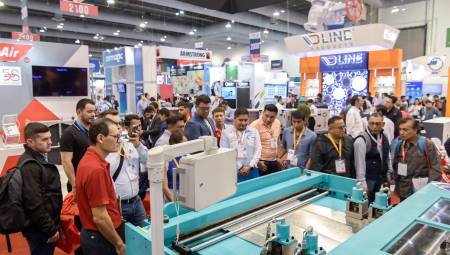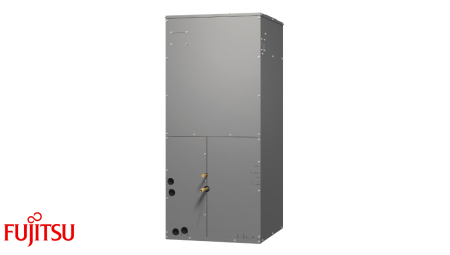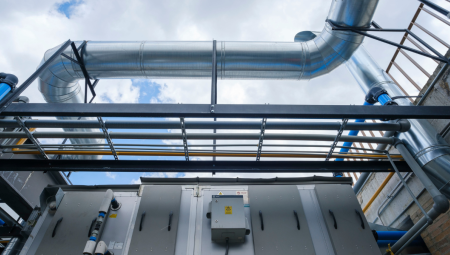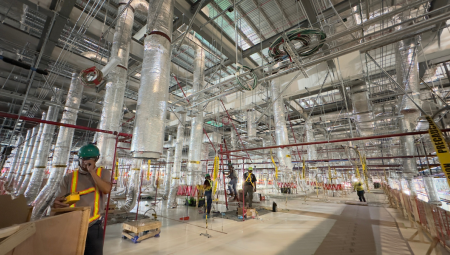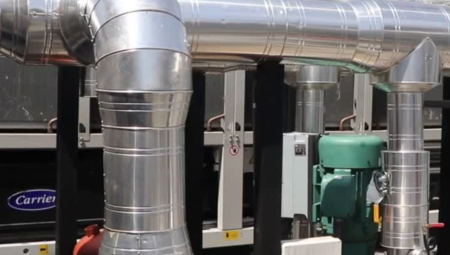Before explaining, what is ultraviolet light? and what is it used for? Let's start by knowing what is the electromagnetic spectrum? The electromagnetic spectrum is the range of energy that extends from radiation of shorter wavelength, such as gamma rays and X-rays, including ultraviolet light, visible light and infrared rays, to electromagnetic waves, whose wavelength is greater, such as radio waves.
The intention of this article is to expose the fundamentals of ultraviolet (UV) light, in order to disseminate its knowledge and the use of it, to solve different problems in Indoor Environmental Quality (CAI), where it is necessary to eliminate contaminants.
Ing. Fernando de Jesús Bonilla González
Before explaining, what is ultraviolet light? and what is it used for? Let's start by knowing what is the electromagnetic spectrum? The electromagnetic spectrum is the range of energy that extends from radiation of shorter wavelength, such as gamma rays and X-rays, including ultraviolet light, visible light and infrared rays, to electromagnetic waves, whose wavelength is greater, such as radio waves.
The limit for the smallest possible wavelength is thought to be the Planck length, while the maximum limit would be the size of the Universe, although formally the electromagnetic spectrum is infinite and continuous.
What is UV light?
Ultraviolet light is part of the electromagnetic spectrum, that is, it is energy whose wavelength is less than visible light but greater than that of X-rays, this wavelength is between 200 to 400 nanometers (nm = 10-9 meters), in other words, all UV light is invisible to the human eye.
That is why this range of electromagnetic energy, which is well known as ultraviolet (UV) light, can in turn be subdivided into the following bands (see Figure 1):
Figure 1. UV light can be subdivided into UVA, UVB, UVC-
• UVA or long wave from 400 to 315 nm, is the most abundant in sunlight, and is the cause of tanning and wrinkles on the skin.
• UVB or intermediate length of 315 to 280 nm, is the cause of redness and cancer in the skin.
• UVC or shortwave from 280 to 200 nm, is the most effective for germicidal use, but does not penetrate the surface of the earth.
How is UV light generated?
UV light exists naturally as part of the electromagnetic spectrum, however for its use for different purposes it is necessary to "produce" or generate it artificially.
The artificial generation of UV light is carried out as follows (see Figure 2),by using an emitter (called a lamp) of pure quartz, which contains an inert gas (mercury vapor), which when an electric current is induced at the poles of the lamp, (which generates a voltaic arc) is ionized, that is, the atoms of the gas receive an electric charge, which increases their energy (excites them).
Figure 2. Artificial generation of UV light-
Additionally, the heat produced by the emitter is increased along with the internal pressure of the gas, which increases the excitation of electrons causing them to "jump" moving through the different wavelength lines, to the point of converting them into photons of UV light.
For example, a low pressure discharge produces a spectrum at 185 and 253.7nm. Medium pressure UV light emitters produce multi-wave radiation, i.e. different wavelengths of varying intensity across the UV spectrum (200-400nm). According to the above, by controlling the discharge and pressure within an emitter it is possible to produce different classes or types of UV light described above, for example that required for tanning beds.
This electromagnetic spectrum can be used in lamps for air purification in buildings, offices, schools and hospitals.
What is UV light used for?
Currently in air conditioning, the most widespread application of UV light is for germicidal purposes and very specifically in cooling coils, that is, it is used to keep them clean, free of algae or fungi, this helps to maintain their thermal efficiency and avoids the use of germicides in condensate trays.
Another perhaps less known, but extremely important, use is the removal of the biological load from the air, this means that ultraviolet irradiation is able to eliminate microorganisms that are airborne. To achieve this it is necessary to determine what they are and in what quantities they are, this allows to determine the "dose" of radiation required.
It is also possible to use UV light as an auxiliary in the treatment or elimination of unpleasant odors, for this UV light lamps are used that generate ozone, which is injected into the air conditioning system, in this application the most important aspect to consider is the amount of ozone that will be produced since we must not exceed the exposure limits established in nom-020-SSAI 1993, because the health of users or occupants would be put at risk. This same technology is used for the dilution of some contaminants.
Finally, there is a new technology that allows combining the ozone generated by the lamp with the water contained in the air (humidity), generating super-oxidant molecules that represent a lower risk than ozone and that work from the fact that they are injected into the areas that must be treated, oxidizing the molecules of the contaminants. The process used by this technology is known as Photo Hydro Ionization or PHI ( for its acronym in English), which is basically a photocatalyzation where the "light" component is UV light.
Germicidal function of UV light
As we have said, UV light is a form of energy that is "transmitted" or "travels" as photons, this means that in order for it to function as a germicide, it is necessary for the microorganism to be "illuminated" or "irradiated" by the photons of UV light, that is, it must be exposed to the UV light beam (see figure 3).
Figure 3.- The wavelength of UV light allows to penetrate and destroy the structure of the DNA of the microorganism.-
Here it is important to remember that this type of UV-C light has a very specific wavelength of 254 nm, and it is precisely that which allows it to penetrate the "wall" that protects the genetic information of the microorganism and break its DNA structure.
The most common form of damage is the destruction of thymine (it is one of the four nitrogenous bases that are part of DNA), causing it to "melt" with one of the other DNA bases, producing a bulge in the "ladder", causing the DNA molecules to not function properly, disabling the microorganism or virus.
Depending on the type of microorganism in question, it will be necessary to expose it to different energy levels (doses), to "eliminate" it. The table shows some examples of the doses to be applied.
Energy required to destroy the most common microorganisms Bacteria Energy Virus Energy Bacillus anthracis 4,520 Rhino Virus 2,950 Bacillus megaterium 1,300 Influenza 3,330 Bacillus megaterium spores 2,730 Bacillus subtilis 7,100 Yeasts Bacillus subtilis spores 12,000 Saccharomyces cerevisiae 6,000 Corynebacterium diphtheriae 3,370 Saccharomyces ellipsoides 6,000 Escherichia 3,000 Brewer's yeast 3,300 Micrococcus lutea 19,700 Baker's yeast 3,900 Energy is at: micro watt-second/cm2The application of UV light in air conditioning systems can be in:
• Air handling units (UMA), and at two particular sites.
- On the low pressure side of the coil (air outlet) in order to keep the coil and condensate tray clean, avoiding the proliferation of microorganisms, whose presence decreases thermal efficiency, because their growth reduces the area of passage of air through the coil, which increases the speed of passage and therefore decreases the time of contact of the air with the fins and tubes, In addition, these microorganisms are an important source of biological contamination.
- On the high pressure side (air inlet), in the high efficiency filters of the system, to inactivate or eliminate the microorganisms that are trapped by the filter, these are irradiated by the lamps that are installed in front of the filters.
• Within the duct system, either in the return or injection, this is done in order to eliminate "at the step" the biological load of the air, for this the aforementioned doses are used, in addition to an adequate material in the duct, since as UV light is a radiation, it is reflected and can multiply its effect.
• In the filter banks, they are installed in front of them, either for fresh air intake or recirculation and thus avoid the introduction of microorganisms into the controlled environment. Or in front of the containment filters to prevent the discharge of polluted air into the environment.
Its use also includes the disinfection of ducts, cooling coils, water handling systems and odor removal, just to mention some of its applications.
How is UV light used?
UV light lamps have a useful life, this is indicated by the manufacturer and it is necessary to change them when the suggested period runs out, since although they do not "turn off" or "melt", if they lose their ability to generate radiation, this is due to the decay of mercury vapor, and of course when this happens the desired effect is no longer achieved, with the corresponding consequences in our application in particular.
In order for the UV light to meet the desired objective, it is enough to install the lamps in the right place according to the application, so that they immediately start their action, whether microbicide or any other such as the elimination of odors.
One recommendation is to avoid radiation on your person, since although for the effects to manifest very high doses are required, it is also true that each person has different sensitivity and can suffer damage from slight "burns" on the skin (tan), to discomfort in the eyes because they can dry out slightly.
Therefore, it is recommended to consult the experts in Indoor Environmental Quality, who will surely be able to guide you in the appropriate use of this technology according to each requirement.
Authors:







